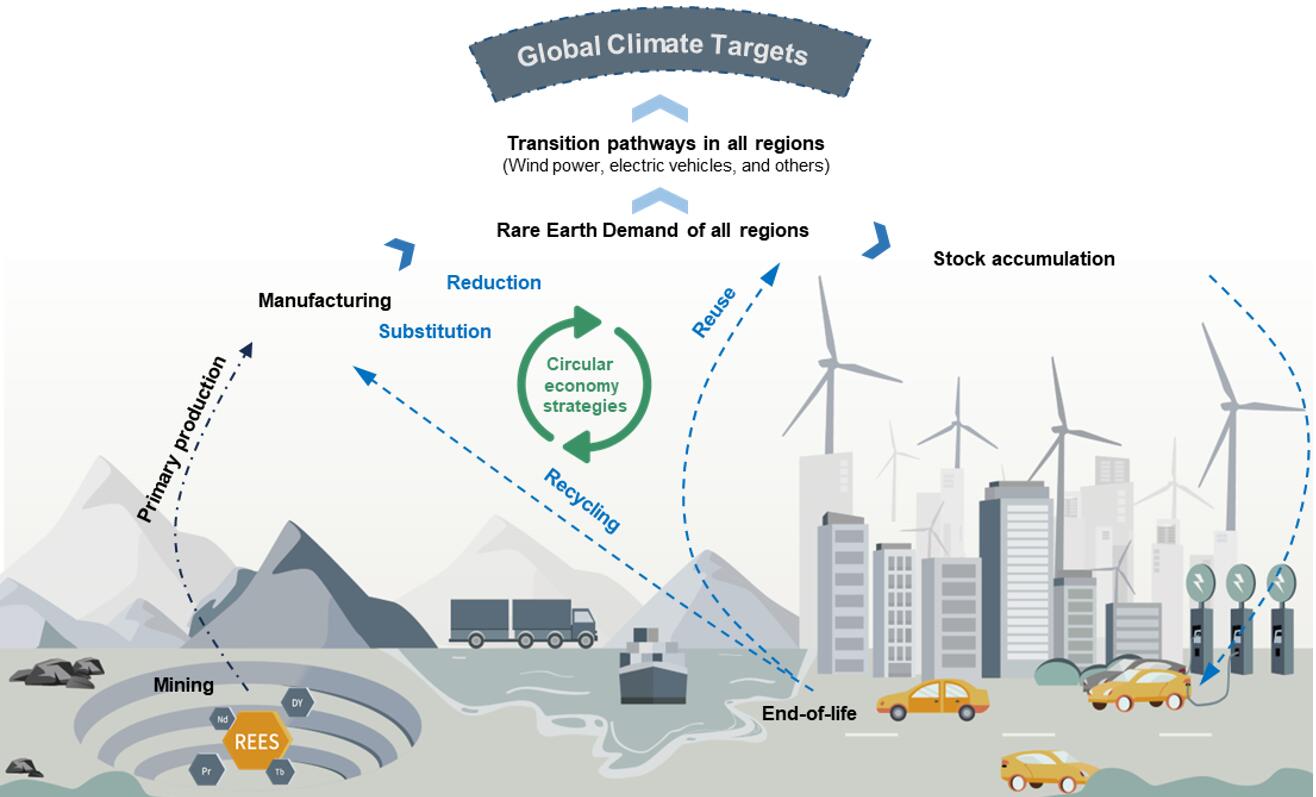| Location: Home > Papers |
| First Author: | WANG Peng |
| Abstract: |
The growing dependence of society on rare-earth elements poses a challenge to achieving a just low-carbon transition globally. While circular economy strategies have gained attention, their specific impacts remain unmeasured. Here we present an integrated model that quantifies how circular economy strategies can reshape global supply chains of the critical rare-earth elements such as neodymium, praseodymium, dysprosium and terbium. The model considers both in-ground and in-use stocks across ten regions from 2021 to 2050. The projections include the full deployment of three widely accepted climate scenarios. We find a considerable mismatch between in-ground stocks, supply and demand at specific region and element levels, with the mismatch for heavy rare-earth elements as a key obstacle for achieving net-zero emissions targets. We suggest that, as in-ground stocks decline among mineral suppliers, the accumulation of in-use stocks in consuming regions can foster a more balanced and less polarized geopolitical landscape for rare-earth elements, and circular economy strategies can lead to an increase of 701 kt secondary supply and a decrease of 2,306 kt demand within the next three decades. Implementing these circular economy strategies will require international cooperation in the governance of rare-earth elements amid sustainable transition.
|
| Contact the author: | CHEN Li-Hua;CHEN Wei-Qiang |
| Page Number: | |
| Issue: | |
| Subject: | |
| Impact Factor: | |
| Authors units: | |
| PubYear: | 04 January 2024 |
| Volume: | |
| Publication Name: | Nature Geoscience |
| The full text link: | https://www.nature.com/articles/s41561-023-01350-9 |
| ISSN: | |
| Appendix: |
